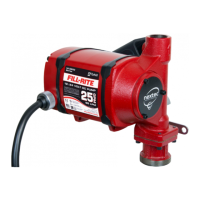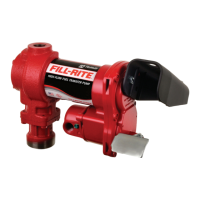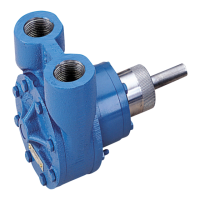nextec™ — Predicts. Protects. Performs.
Troubleshooting (cont’d)
Motor stalls / fuse blows. Short in wiring. Inspect electrical cable for shorts and replace as
necessary.
Excess rotor or vane wear. Check vanes for nicks, damage, obstructions, or
excess wear. Replace as necessary.
Pump rotor lock-up. Clean and inspect rotor and vanes.
Debris in pump cavity. Clean debris from pump cavity.
Components rusting from pumping
water.
Let pump dry completely.
Low capacity. Excessive dirt in screen. Remove and clean screen.
Suction line problem. Check suction line for leaks or restrictions; it may be
too small in diameter, too long, not air tight, or too low
vertically.
Excessive rotor, vane, rotor cover,
or housing wear.
Inspect rotor, vanes, rotor cover, and housing for
excess wear; replace as necessary.
Hose or nozzle damage. Replace hose or nozzle.
Low uid level. Rell tank.
Pump runs slowly. Incorrect voltage. Check incoming line voltage while pump is running.
Vanes sticking. Check vanes for nicks, damage, obstructions, or
excess wear. Replace as necessary.
Wiring problem. Check for loose connections.
Motor problem. Return to place of purchase.
Bold text indicates repairs that are not serviceable by the owner; pump must be returned to the place of purchase for repairs.
*This condition will shut the motor off.
Symptom Cause Cure
Pump won’t prime. Suction line problem. Check suction line for leaks or restrictions; it may be
too small in diameter, too long, not air tight, or too low
vertically.
Vanes sticking. Check vanes for nicks, damage, obstructions, or
excess wear. Replace as necessary.
Excessive rotor, vane, rotor cover,
or housing wear.
Inspect rotor, vanes, rotor cover, and housing for
excess wear; replace as necessary.
Inlet / Outlet blocked. Check pump, hose, nozzle, and lter / strainer for
blockage.
Excessive vertical or horizontal
inlet plumbing
Reduce vertical or horizontal distance from pump to
liquid.

